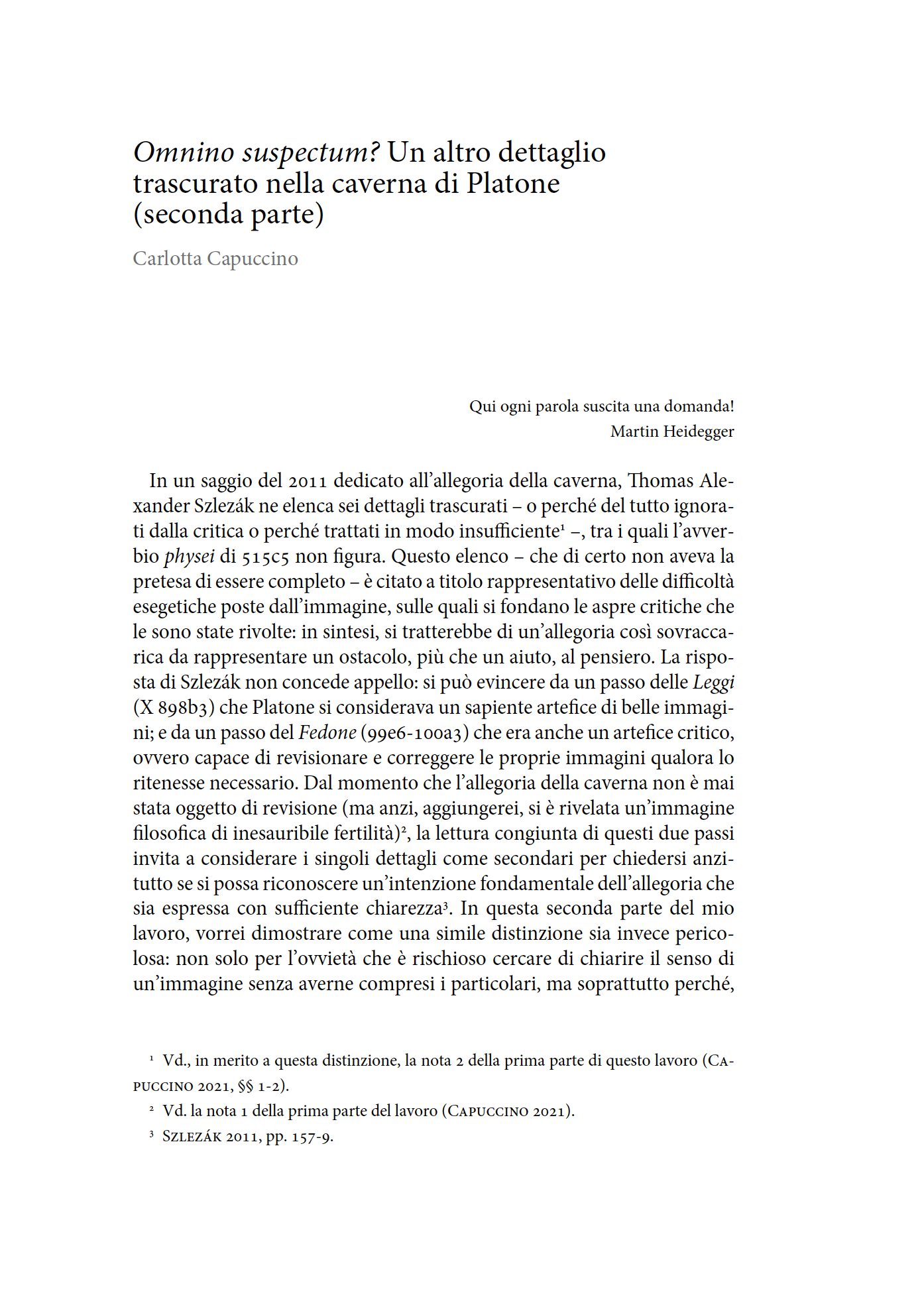Omnino suspectum? Un altro dettaglio trascurato nella caverna di Platone (seconda parte)
Contenuto principale dell'articolo
Abstract
Among the many details of Plato’s cave overlooked by the interpreters, there is one that raises a question of crucial importance. At a turning point in the allegory, Socrates invites us to imagine that something happens to the prisoners: “by nature” (physei) one of them is released from his chains and forced for the very first time to get up, turn around and walk. There is the most absolute suspicion about the authenticity and meaning of the adverb physei in this passage: how is it possible to be forced by nature? Nature and compulsion would seem incompatible. My work is divided into two parts: the first part (§§ 1-2) aims to clarify the reasons for the suspicion, reconstructing the textual history of the passage; the second one (§§ 3-5) aims to offer an answer to these reasons, showing that not only it is possible to justify the presence of the adverb in that place, but in it lies the key to interpreting the whole allegory.

